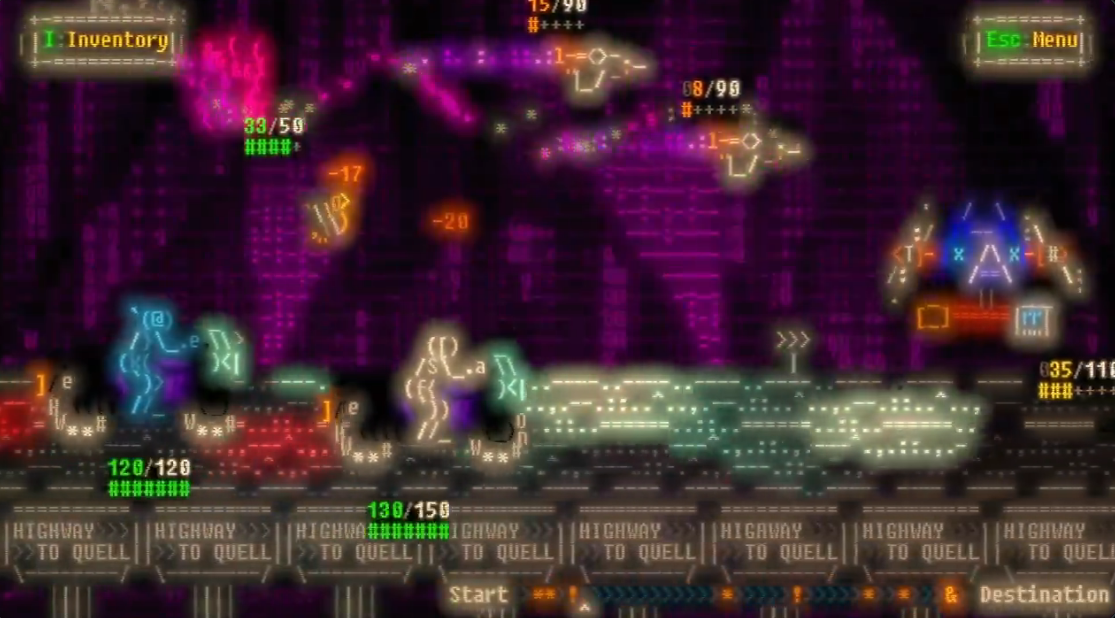Borderlands 4 might be the series' turning point – after 3 hours of playing it, here's what caught me off guard
What I found made me rethink what Borderlands is becoming.
Previously, there have been many words that would have sprung to my mind when describing a Borderlands game: fun, chaotic, distinctive, and over-the-top among them. But there’s one that I definitely would never have used before playing Borderlands 4: mature.
The genre-defining looter-shooter has always clothed its all-action gameplay in a confection of somewhat adolescent frat-boy humour, and its famously distinctive visuals could have been lifted from the pages of any number of comic books.
However, once a franchise reaches its fourth iteration (actually more than four in the case of Borderlands, thanks to spin-offs like Borderlands: The Pre-Sequel and Tiny Tina’s Wonderlands), it almost by definition reaches maturity. And after spending over three hours playing Borderlands 4 at publisher 2K Games’ UK headquarters – in three separate chunks involving one of the first story missions, a Vault mid-way through the game with a level-20 character, and a chunk of two-player co-op – I certainly felt that Borderlands 4 showed a new-found maturity lacking in its predecessors. Without, happily, compromising any of its unique personality and charm.
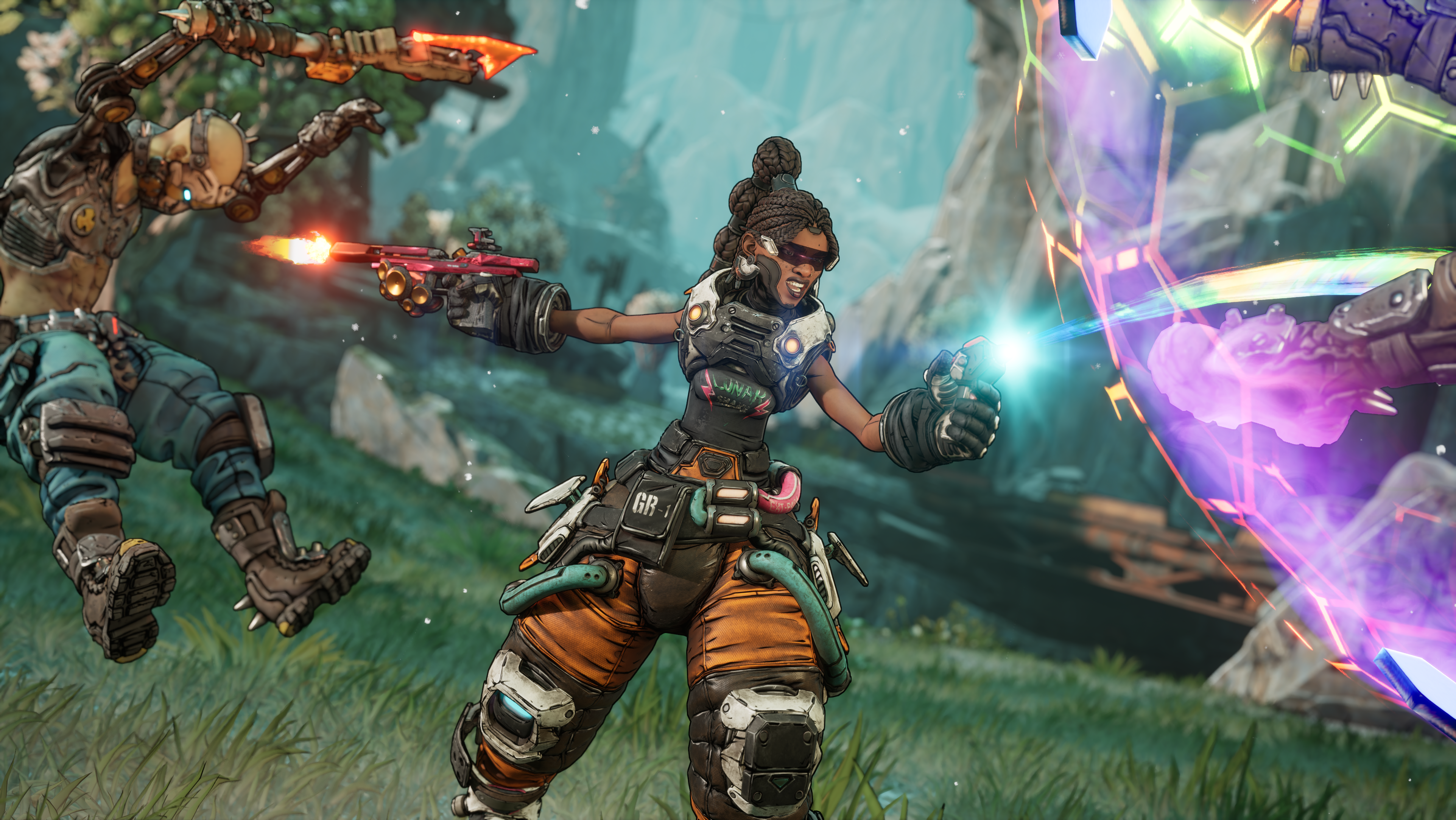
What’s new in Borderlands 4?
I collared two of Borderlands 4’s architects at developer Gearbox: Chris Brock, Executive Producer, and Taylor Clark, Lead Writer. Brock explained the game’s initial starting point: “When we were going from Borderlands: The Pre-Sequel to Borderlands 3, our big focus was the levelling up of gunplay. Going from 3 to 4, the very first meetings were: ‘Well, if we can do for exploration in this one what we did for gunplay in the last one, we would be off to a great start’. So that turned into a bunch of different traversal abilities, and then that turned into making a world that uses those traversal abilities.”
In other words, Borderlands 4 is the first properly open-world game in the series – previously, getting to particular areas would often involve an element of environmental puzzling. But in Borderlands 4, I was able to jump, double-jump, and even jump-and-glide, as well as grapple to designated points (not unlike Just Cause). Plus, I swiftly acquired a (commendably controllable) hover-bike for eating up larger swathes of ground, and for the first time in a Borderlands game, the character I controlled could swim.

Gone, too, is the familiar setting of the planet Pandora, which features in many previous Borderlands games. This time around, the action takes place on a planet called Kairos, with a very different vibe, both in terms of geography and the underlying story.
Clark explained: “We’ve moved on to a different planet, and the stakes are different. On Pandora, it was the Wild West, and anything went – corporations were at each other’s throats, so it made sense that we might be more freewheeling in that department. Kairos is a dictatorship; it’s a totalitarian regime, so the freewheeling, shotgun approach doesn’t seem appropriate here. So we’re trying to find the storytelling and the balance of humour that feels right for the story that we’re telling.”
Daily design news, reviews, how-tos and more, as picked by the editors.
Clark added that Borderlands 4’s setting is much more coherent than those of its predecessors: “We’ve been joking that the planets and places we’ve gone to in former games were like Star Wars planets – all swamp, or all desert. And here you can feel that it’s a more diverse place. You might start in a grassy area, go through a forest, you’ll find some snow, and then you’re in the mountains. You’re experiencing different enemy types, different creatures, different civilisations, essentially, too.”

Similar graphics, with added modernity
While Borderlands 4 preserves the franchise’s unique, cel-shaded and black-outlined comic book-like art style, one of the first things I noticed about the game was that its graphics looked way crisper and generally modern than before, with vastly improved draw distances, for example. Anthony Nicholson, the game’s Senior Project Producer, explained that moving from Unreal Engine 4 to 5 played a key part in the process of refreshing Borderlands 4’s visuals.
“Increased detail and higher fidelity were a major focus of improvement over past titles. More detail with higher polygon counts, higher resolution textures, and more character and environment details are physics-driven, which translates to more cool secondary motion. We can see more of the world with vast vistas that aren't just background, but are also explorable now. Every blade of grass and every leaf in every tree is modelled out now in high detail.”
Nicholson describes how the new traversal systems necessitated a fundamental change in approach when making Borderlands 4: “The new traversal mechanics heavily impacted the way we developed the world. The world is built completely differently from other Borderlands titles in the past. The way our games used to be laid out was sculpted and scripted, but once you’re able to go around these spaces, we have to make them visually compelling from every angle. Previously, water had been used to provide a barrier to players, but with the seamless nature of the world, we implemented swimming and the ability to traverse over water with the Digirunner.”
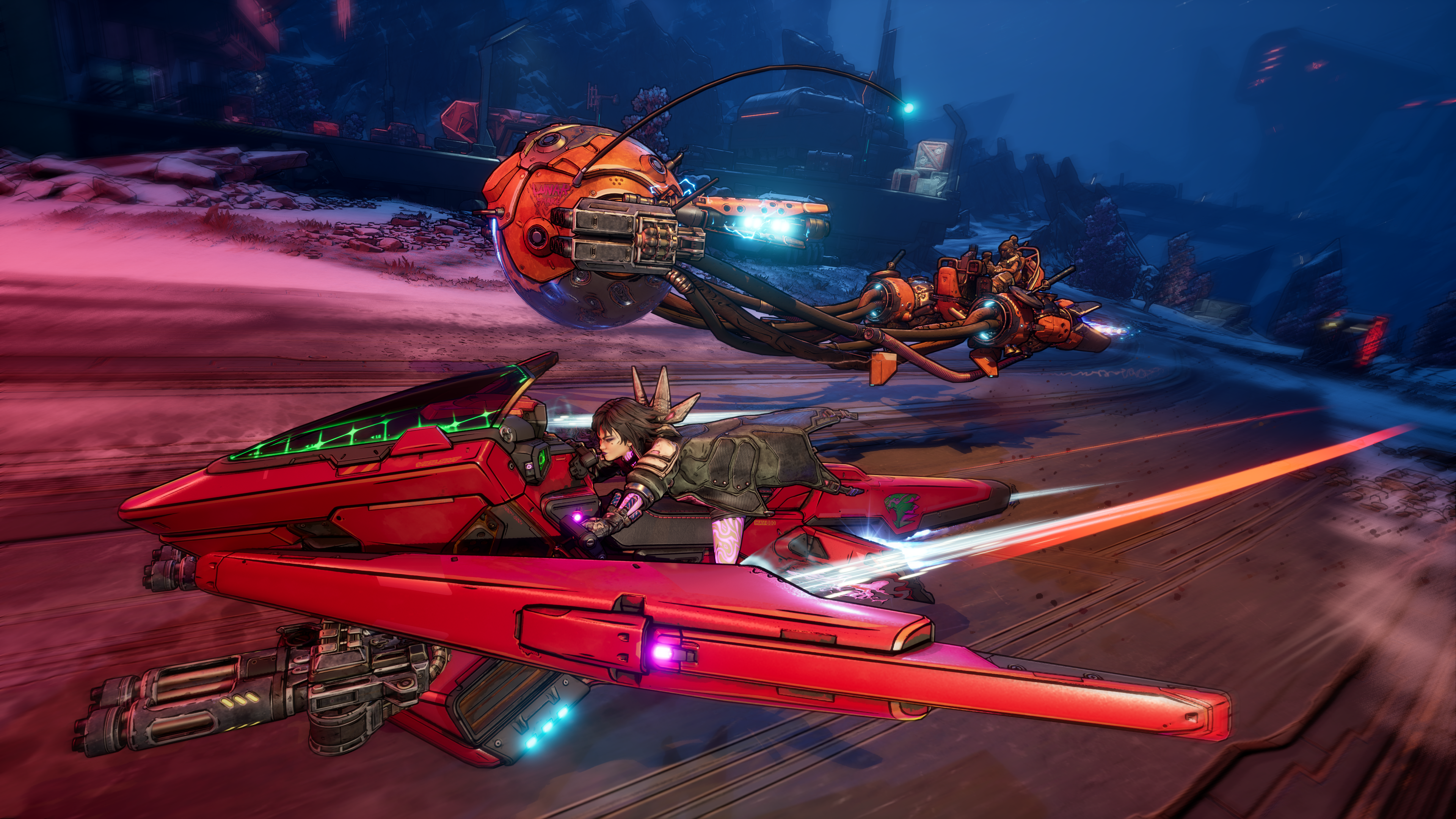
Borderlands 4 hands-on impressions
I initially jumped into a sequence right at the beginning of the game, with the choice of playing as two vault-runners: Rafa, a tank-like exo-soldier or Vex, a siren. Through the course of the game, two other vault-runners will become available, and the whole game is playable co-operatively by up to four people.
Instantly, Borderlands 4 felt reassuringly familiar – thanks primarily to the distinctive visuals and bewilderingly vast array of varied weapons on offer – yet somehow more modern and slicker than previous iterations.
Before long–playing as Rafa, who would occasionally earn access to a rocket launcher-type weapon, and who could transform into a hard-hitting, ninja-style melee-machine, I hooked up with a group of outlaws called the Outbounders, providing resistance to Kairos’s totalitarian regime, the Order, and its dictator, Idolator Sol.
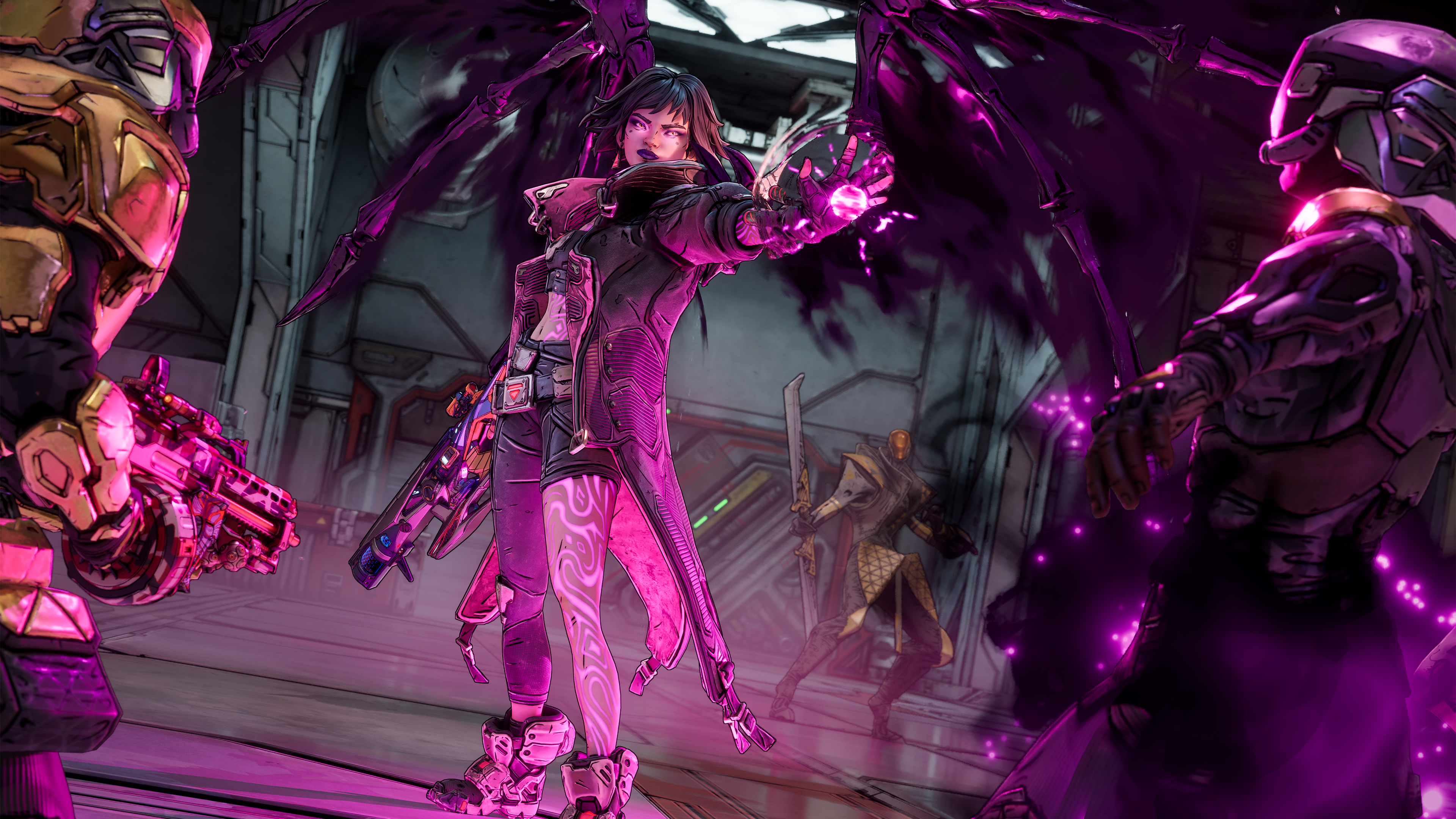
The gunplay was as deliciously over-the-top as ever, with various elemental effects (including fire, freezing, and electricity), with shotguns and sniper rifles, slow yet powerful. Uncharacteristically, I initially found myself preferring a light machine-gun to my usual assault rifle, but before long, I had collected an array of weapons and began experimenting with them. Another innovation Gearbox has added to Borderlands 4 is the ability to mix and match by adding components from different weapons manufacturers to your favoured guns – a feature for later in the game.
The Digirunner – the hover-bike – was great, albeit equipped with a pretty weak gun, so I tended to hop off it and engage on foot when ambushed. After working through his minions and defeating an early boss called Horace, I retrieved a so-called Bolt – essentially a memory chip – from him. This necessitated another mission involving acquiring the components required to build a Bolt reader. When that was done, it was possible to extract the intel that Idolator Sol was finishing off the construction of a bio-weapon.
With a brief story-mission hiatus, I set off to explore the surrounding area and quickly found all manner of side-missions to pursue, as well as having the chance to check out Borderlands 4’s upgrade tree, which was as huge and complex as I anticipated it to be. In general, Kairos’s diversity was instantly striking – even a short play session confirmed that it will offer a more convincing and rounded environment than any previous Borderlands game.
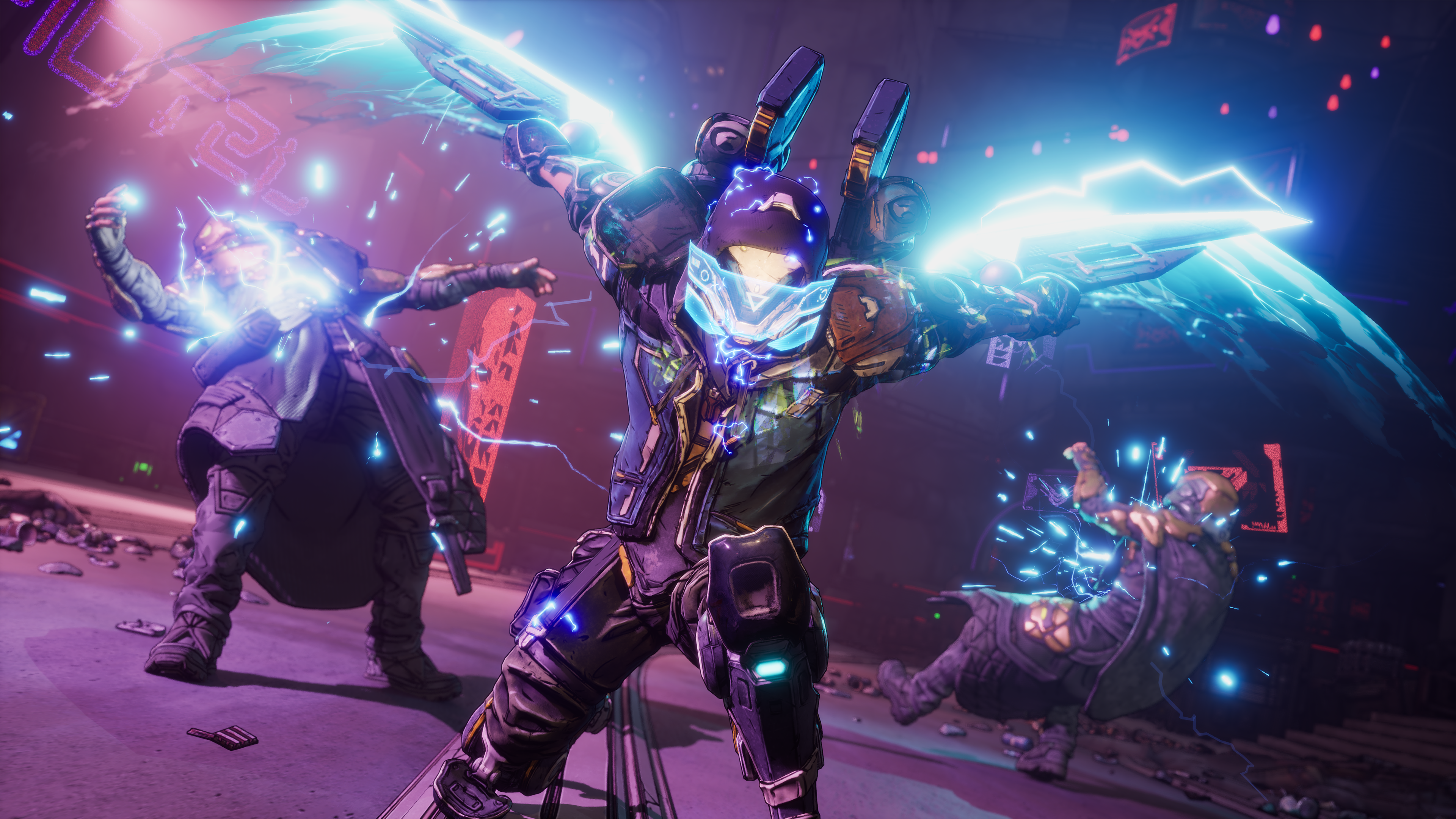
Time for a vault-hunt
The next stage of play involved working my way through a vault – Borderlands’ equivalent of a dungeon. In classic Borderlands fashion, that involved eliminating waves of enemies that escalated in difficulty, thereby opening up the next area, until I faced off against a satisfyingly fearsome, vaguely reptilian boss called Inceptus, with a deadly whip-tail attack, and the ability to attach himself to the ceiling of the cave in which the fight took place, necessitating the use of my grapple to obtain a higher angle with which to damage him.
It was the sort of archetypal vault-hunting – challenging and memorable – that Borderlands fans crave. Finally, I jumped into some fairly random co-op play with a member of Gearbox’s QA team, working through a side-mission early in the game. Naturally, with two of us, the level of opposition scaled up accordingly. But the whole move to co-op felt seamless, and thanks to the ability to be revived by my partner (although, as ever, Borderlands 4 lets you revive yourself from your death throes by killing any enemy within a certain time), fun and generally attractive. Which was welcome, since setting up co-op play sessions can often be a pain.

Overall impressions of Borderlands 4
After three hours with it, I felt that Borderlands 4 was, well, most definitely Borderlands: it preserved the inimitable look and feel that lends the franchise its appeal. But it also felt markedly more modern than its predecessors. I only really scratched the surface of the new traversal abilities, which came in very handy both when dodging incoming attacks and reaching areas that previously would have been impassable in a Borderlands game. But I loved them and felt they would come into their own later on, against more challenging opposition.
Perhaps more importantly, the whole tone of the game felt much more grown-up than previously. There was a real sense of engaging in an opposition to a totalitarian dictator, which was much more widespread across the game world than the previous factional infighting. Sure, the characters would sometimes come up with some lame jokes, but the dialogue felt less adolescent-centric than before, in keeping with the game’s more serious storyline.
Borderlands 4 has also clearly been endowed with a much bigger game world than its predecessors. Brock and Clark refused to be drawn on how long it would take to play through, but when it is released on 12 September, we’ll have a better idea of just how meaty it is. Until then, I can confirm it is set to be undeniably the most mature, modern, and high-tech Borderlands yet, which should fill fans of the franchise with a great amount of anticipation.

Inspired? Read our guides to the best game development software and the best digital art software, and begin creating your game worlds.
Steve has written about video games since the early 1990s. Nowadays, he also writes for The Guardian, Pocket-lint, VGC and Metro; past outlets include Edge, The Daily Telegraph, The Sunday Times, The Mirror, The Face, C&VG, Esquire and sleazenation.
You must confirm your public display name before commenting
Please logout and then login again, you will then be prompted to enter your display name.
